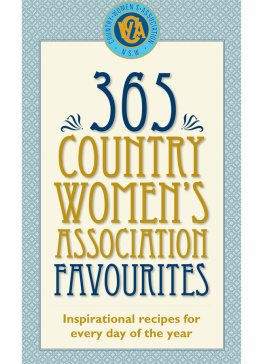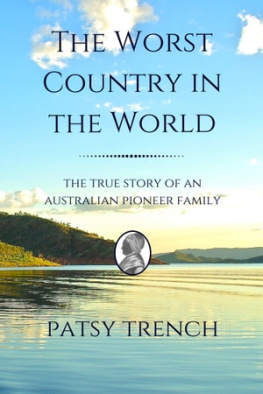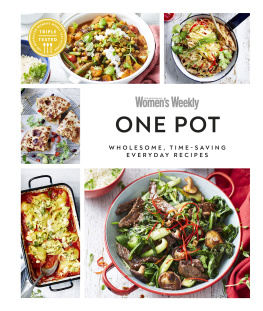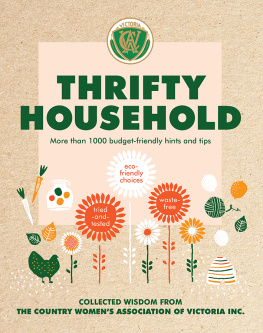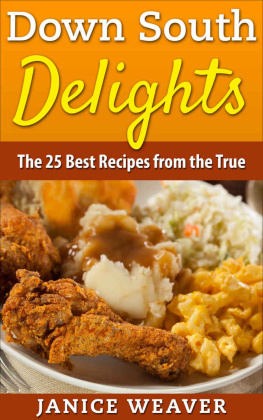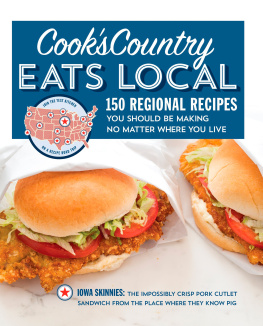CONTENTS

INTRODUCTION Over a period of three years in the early 1930s, the Country Womens Association of New South Wales produced three cookbooks. Each took the form of a recipe-a-day calendar and all were filled with recipes contributed by individual members. A huge commercial success, they sold in numbers that would be the envy of any modern-day food author; between October 1930 and April 1933, a staggering 35,000 of the Cakes and Afternoon Tea Delicacies volume alone were purchased for the cover price of 2 shillings. These cookbooks were designed for display on a kitchen wall, handy for everyday reference and use. Each shared the same dimensions and simple layout: narrow, rectangular pages printed on thick paper, bound along the top edge and finished with an arc of string for hanging. In a CWA Annual Report from the period, it was noted that The Cake and Afternoon Tea Delicacies calendar, compiled by Mrs WH Hammond of Wagga Wagga, has been an unqualified success (and) has been circulated far and wide.
A Calendar of Puddings was the next to be produced, after which came a collection of Luncheon and Tea Dishes. The latter, it was noted at the time, proved most successful. The nature of the recipes gives great insight into how women cooked during this era; their dishes are simple, honest and homey. These were Depression years, when money and resources were tight. In a time before access to high-speed information and widespread international travel, culinary influences were few. Accordingly, the various dishes mainly reflect the English, Scottish and Irish cookery traditions that defined early Australian cookery.
Ingredients back then, in comparison to the huge selections we enjoy today, were relatively limited in range. Labour-saving kitchen devices (food processors, electric cake mixers and the like) simply didnt exist. Most cooking was done on a wood- or coal-fired range. Tasks such as creaming butter and sugar something modern cooks accomplish with ease using electric beaters involved the manual employment of a wooden spoon. More often than not, even mincing meat was done at home using a hand-cranked mincer; such jobs were laborious yet were part of a cooks everyday routine. Despite the passage of eight decades, these recipes still hold great appeal for todays cook, especially the tried-and-true cakes, biscuits, puddings and myriad other baking recipes that make up by far the largest category in the original material.
For this volume, each of the original recipes chosen has been tested and updated for contemporary use, taking into account modern cookery styles and equipment. The majority of the recipes didnt contain specifics for essentials such as cake tin sizes, baking dish capacities, precise cooking times or even oven temperatures. They carried the tone of recipes shared informally amongst friends, and kitchen-savvy friends at that, who could fill in such gaps in information with ease. Without sacrificing the integrity of the original material, the recipes now include more complete methods, so the modern cook can take them into their own kitchen with confidence and ease. The spirit of these cookbooks is perhaps best reflected in the words of the CWA of NSW State President during those years, Jessie Sawyer. It is in her own home that a good woman is seen at her best.
This Cookery Calendar has been compiled by such [a] one to assist her fellow woman. On behalf of all those who need our help we ask for your support for this venture. Jessie Sawyer, 1930 State President The Country Womens Association of NSW
Gwydir Group Conference, 1955 From humble beginnings in 1922, the Country Womens Association of New South Wales (including the ACT) is part of the largest female lobby group in Australia, the CWA of Australia. It has approximately 10,000 members belonging to 397 branches, who meet monthly to discuss a variety of initiatives. These range from fundraising for medical research, lobbying for better services for families and helping out in times of emergency, to handicraft and cookery projects. The CWA of New South Wales is evolving to work in new environments, but still under the same banner of improving conditions and life for women, children and families.
For more information, see our website www.cwaofnsw.org.au or telephone 02 9358 2923.
1 JAN Sago Snow Mrs Robards, Nevertire Branch SERVES 46 3 lemons 100 g ( cup) sago 1 litre (4 cups) water 220 g (1 cup) caster sugar 4 egg whites Custard 600 ml milk 1 vanilla pod, split and seeds scraped 4 egg yolks 2 teaspoons cornflour 2 tablespoons caster sugar Finely grate the zest of one lemon and juice all three lemons. Set the zest and juice aside. Combine the sago and water in a saucepan and bring to a simmer over medium heat. Reduce heat to low and cook, stirring often to prevent sago catching, for 1520 minutes, or until the mixture is thick and sago is translucent. Add the sugar and cook, stirring, for 23 minutes, or until sugar is dissolved.
Remove from heat and add the zest and juice. Transfer to a bowl and cool slightly. Using an electric beater, whisk the egg whites in a bowl until firm peaks form. Gently fold the whites into the sago mixture. Chill mixture in the refrigerator. For the custard, heat the milk with the vanilla pod and scraped seeds until almost simmering, stirring constantly.
Whisk the egg yolks, cornflour and sugar until a smooth paste forms. Pour over the milk mixture and stir to combine well. Return the mixture to a clean saucepan and cook, stirring constantly with a wooden spoon, over mediumlow heat for 1015 minutes, or until the custard thickens. Do not overheat, or custard may curdle. Serve the chilled sago with warm custard. 2 JAN Yass Savoury Mrs R Connell, Yass Branch MAKES ABOUT 500 G 170 g (1 cup) sultanas, chopped 200 g finely chopped ham 2 tablespoons finely chopped gherkins mayonnaise, to bind lettuce leaves, sandwich bread or toast triangles, to serve Combine sultanas, ham and chopped gherkin in a bowl.
Add enough mayonnaise to loosely bind the mixture should spread easily. Stir to combine well and season to taste with salt and pepper. Serve in lettuce leaf cups as a light lunch, as a sandwich filling or on toast triangles as a snack. 3 JAN Apricot Upside-Down Pudding Mrs L Chapman, Braidwood Branch SERVES 68 1 x 420 g tin apricot halves in juice 140 g butter 110 g ( cup) caster sugar 2 eggs 185 g (1 cups) plain flour 2 teaspoons baking powder teaspoon salt 165 g ( cup) brown sugar, firmly packed 95 g (1 cup) flaked almonds whipped cream, to serve Preheat oven to 180C. Lightly grease and flour a 20 cm cake tin. Drain the apricots well, reserving 80 ml (1/3 cup) of the juice.

